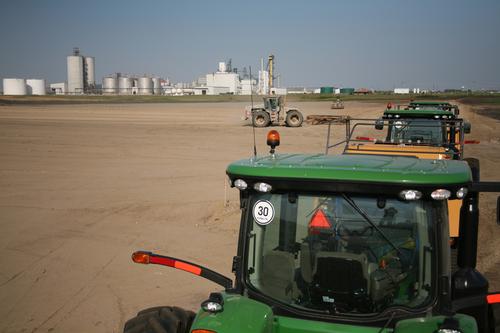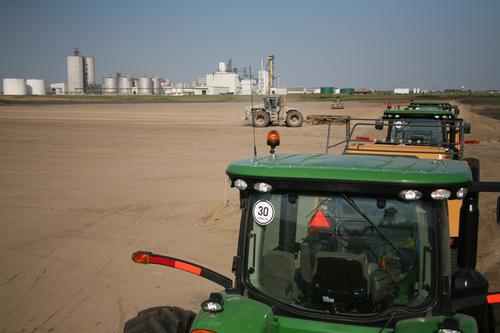DuPont Recruits 500 Farmers for Non-Food Biofuel Project
January 17, 2013

Using agricultural waste, instead of food crops, to make biofuels and bioplastics is a subject that's been discussed often in Design News' comment boards. One of the biggest -- and also one of the first -- commercial-scale cellulosic biorefineries in the world is targeted for completion next year by DuPont, and it will make cellulosic ethanol from corn stalks and leaves.
The corn stalks and leaves that will serve as feedstock are known as corn stover.DuPont has recruited more than 500 local farmers near the site of its Nevada, Iowa facility, where it recently broke ground, to provide this material. The facility, which the company expects to complete in 2014, will generate 30 million gallons per year.

DuPont, which is involved in agricultural science as well as plastics, has been testing and optimizing its biofuel production process and technology in a Tennessee pilot plant, but the effort began more than 10 years ago. "Nearly a decade ago, DuPont set out to develop innovative technology that would result in low capital and low-cost cellulosic ethanol production," said James C. Collins, president of DuPont Industrial Biosciences, in a press release. "By leveraging DuPont Pioneer corn production expertise and designing an integrated technology platform, we've built an affordable and sustainable entry point into this new industry."
In planning the process and the facility, DuPont has worked closely with the state of Iowa, Iowa State University, and growers to make renewable fuels a commercial reality, Collins said. As a state, Iowa leads the US in renewable fuel production, said its governor, Terry Branstad, at the groundbreaking ceremony.
DuPont estimates it will need 375,000 dry tons per year of corn stover to meet the annual goal of 30 million gallons. That will require corn stalks and leaves to be harvested from about 190,000 acres. To supply those quantities, DuPont will contract with more than 500 local farmers to gather, store, and deliver the corn residue. Although growers often leave a little stover on the field as a mulch to protect against erosion, there's a lot more than they need and disposing of it is a big headache. It interferes with corn planting and maintenance, pulls nitrogen out of the soil that could be used by crops, and can house insects and diseases that damage corn plants.
In addition to corn waste, DuPont is working on adapting its process to other feedstocks, such as switchgrass. Currently, the company is processing switchgrass in its testing facility near Knoxville, Tenn., which it owns jointly with the University of Tennessee. DuPont says several local businesses and academic institutions are interested in using the resulting biofuel to reduce some of the energy they get from burning coal.
We've written before about the need for finding usable biofuel feedstocks that don't use food crops and also don't grow non-food crops on land that could be growing food, even if it isn't used for that now. We've also reported on converting non-recycled plastic trash and other waste that would otherwise go into landfills into fuel. But I haven't seen a company and a research project on this scale that set out to do a high-quality job of making fuel from the huge amounts of agricultural waste. DuPont is a company with a lot of resources and a stated dedication to sustainability. They've spent a lot of time, effort, and research dollars on this project, and have done the homework needed to make it succeed. The proof will be in the product, but meanwhile, I say kudos and more power to them.
Related posts:
About the Author(s)
You May Also Like



